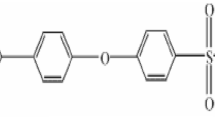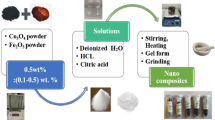Abstract
Carbon Black (CB)-containing immiscible polymer blends based on high-impact polystyrene/thermoplastic polyurethane (HIPS/TPU) were studied as sensing materials for an homologous series of alcohols, including, methanol, ethanol and 1-propanol. The studied immiscible blend was designed to exhibit a double-continuity structure i.e., the CB particles form chain-like network structures within the TPU phase, which forms a continuous phase within the HIPS matrix. Extruded HIPS/TPU/CB filaments produced by a capillary rheometer process at various shear rate levels were used for the sensing experiments. All filaments displayed a selective resistance changes upon exposure to the various alcohols combined with reproducibility and recovery behaviour. An attempt is made to identify the dominant mechanisms controlling the sensing process in a CB-containing immiscible polymer blend characterized by a double-continuity structure. The distinct structure and composition of the HIPS/TPU interphase region were found to have a crucial role in the sensing mechanism, determining the selectivity of the filaments toward the studied alcohols. Additionally, the sensing performance of HIPS/TPU/CB system is compared to recent results for TPU/CB compounds, polypropylene/TPU/CB and HIPS/ethylene vinyl acetate/CB immiscible polymer blends.
Similar content being viewed by others
References
B. J. DOLEMAN, R. D. SANNER, E. J. SEVERIN, R. H. GRUBBS and N. S. LEWIS, Anal. Chem. 70 (1998) 2560.
S. SRIVASTAVA, R. TCHOUDAKOV and M. NARKIS, Polym. Eng. Sci. 40 (2000) 1522.
M. NARKIS, S. SRIVASTAVA, R. TCHOUDAKOV and O. BREUER, Synth. Metals 113 (2000) 29.
O. BREUER, R. TCHOUDAKOV, M. NARKIS and A. SIEGMANN, J. Appl. Polym. Sci. 64 (1997) 1097.
Idem., ibid. 74 (1999) 1731.
Idem., ibid. 73 (1999) 1655.
E. SEGAL, R. TCHOUDAKOV, M. NARKIS and A. SIEGMANN, J. Polym. Sci. Part B: Polym. Phys. 41 (2003) 1428.
Idem., Polym. Eng. Sci. 42 (2002) 2430.
J. R. LI, J. R. XU, M. Q. ZHANG and M. Z. RONG, Macromol. Mater. Eng. 288 (2003) 103.
F. GUBBELS, S. BLACHER, E. VANLATHEM, R. JEROME, R. DELTOUR, F. BROUERS and PH. TEYSSIE, Macromoleules 28 (1995) 1559.
L. E. NIELSEN and R. F. LANDEL, "Mechanical Properties of Polymers and Composites" (Marcel Dekker Inc, NewYork, 1994) p. 197.
P. S. THEOCARIS and V. KEFALAS, J. Appl. Polym. Sci. 44 (1991) 3059.
W. J. MACKNIGHT, F. E. KARASZ and J. R. FRIED, in "Polymer Blends," edited by D. R. Paul and S. Newman (Academic Press Inc., New York, 1978) p. 189.
C. E. ROGERS, in "Polymer Permeability," edited by J. Comyn (Elsevier Appl. Sci., London, 1985) p. 11.
M. R. KAMAL, I. A. JINNAH and L. A. UTRACKI, Polym. Eng. Sci. 24 (1984) 1337.
Y. M. SUN, Polymer 37 (1996) 3921.
S. WU, "Polymer Interface and Adhesion" (Marcel Dekker Inc., New York, 1982) p. 184.
S. LEE and K. S. KNAEBEL, J. Appl. Polym. Sci. 64 (1997) 455.
G. GUERRICA-ECHEVARRIA, J. I. EGUIAZABAL and J. NAZABAL, J. Macromol. Sci.-Phys. B 39 (2000) 441.
A. ELEBERAïCHI, A. DARO and C. DAVID, Euro. Polym. J. 35 (1999) 1217.
S. C. GEORGE, G. GROENINCKX, K. N. NINAN and S. THOMAS, J. Polym. Sci. Part B: Polym. Phys. 38 (2000) 2136.
Author information
Authors and Affiliations
Rights and permissions
About this article
Cite this article
Segal, E., Tchoudakov, R., Narkis, M. et al. Sensors for chemicals based on electrically conductive immiscible HIPS/TPU blends containing carbon black. Journal of Materials Science 39, 5673–5682 (2004). https://doi.org/10.1023/B:JMSC.0000040075.46380.63
Issue Date:
DOI: https://doi.org/10.1023/B:JMSC.0000040075.46380.63




